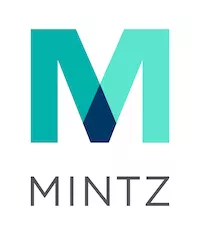- with readers working within the Media & Information and Pharmaceuticals & BioTech industries
- within Law Practice Management and Coronavirus (COVID-19) topic(s)
On February 15, 2024, the Centers for Medicare and Medicaid Services (CMS) released the Medicare Prescription Payment Plan Draft Part Two Guidance (Part Two Guidance) as part of the Inflation Reduction Act's (IRA) efforts to tackle high prescription drug costs. The Medicare Prescription Payment Part Plan (the Program), which was previously referred to as the "OOP Smoothing Program", was established as part of the IRA and requires Part D plans (PDPs) to offer their members an option to pay for out-of-pocket (OOP) prescription drug costs in monthly capped payments, as opposed to all at once, at a pharmacy. Meaning, for members who opt-in to the Program, they will pay $0 at the pharmacy and the PDP must pay the pharmacy the full cost-sharing amount of the drug and then bill the member the amount of the cost-sharing over the remainder of the calendar year.
Part One of the guidance, issued August 21, 2023, largely focused on the Program's operational requirements, as discussed in an earlier post. The Part Two Guidance pivots its attention to the outreach, education, and communication requirements for PDPs to provide further instruction with respect to educating and informing members about the Program.
Outreach and Education Requirements for PDPs
Under the IRA, PDPs are required to provide Part D members with educational materials to inform them of the benefits available under the Program, which will take effect in 2025. For instance, under the Part Two Guidance, PDPs are required to:
- Provide new members with information regarding the Program and an "election request form," when the PDP mails the member his or her membership ID cards;
- Include information about the Program on their websites, including an overview of the Program, examples of how the Program calculation works with member-friendly language, and how enrollees may file complaints;
- Adopt various methods of identifying Part D enrollees likely to benefit from the Program, including assessing their current enrollees' drug costs; and
- Adopt various methods of communicating with enrollees likely to benefit from the Program, including providing the CMS standardized "Medicare Prescription Payment Plan Likely to Benefit Notice," (to be released by CMS in the summer of 2024), to such enrollees and requiring that pharmacies do so as well.
In addition to the requirements set forth in the Part Two Guidance, CMS encourages Part D sponsors to communicate information about the Program with contracted providers and network pharmacies given their opportunity to interact with patients more readily. CMS has either released, or plans to release, all of the educational materials mentioned above for Plan D sponsors.
CMS is also updating several existing marketing materials and developing new model marketing materials related to the Program. For example, CMS is updating its model Evidence of Coverage, Annual Notice of Change, and Explanation of Benefits to include information on the Program. CMS is also developing a model "Medicare Prescription Payment Plan Participation Request Form" for members to use to opt-in to the Program, a model "Part D Sponsor Notice to Acknowledge Acceptance of Election into the Medicare Prescription Payment Plan" for PDPs to use to satisfy the requirement that they notify members of their enrollment into the Program, as well as model notices for members that fail to pay and for termination of a member's enrollment in the Program.
Pharmacy Processes
Pharmacies play a critical role under the Program, and as such, CMS outlines required processes the PDP must establish with all pharmacies in their network. First, the IRA requires that PDPs notify pharmacies at the point of sale when a member's OOP costs are sufficiently high such that a member will benefit from the Program. CMS assumes that PDPs will provide this notification through the adjudication process, whereby, if OOP costs are sufficiently high, the claim response coming from the PBM/PDP to the pharmacy would include the notification. Upon receipt of the notification, pharmacies must inform the member of the Program and the fact that he or she will benefit from the Program. In retail pharmacies, this includes requiring that the pharmacy provide a hard copy of the "Medicare Prescription Payment Plan Likely to Benefit Notice" when the member picks up his or her prescriptions. For mail order pharmacies, PDPs must require the mail order pharmacy to notify the member via a phone call "or their preferred contact method."
As a result, PDPs (or their PBMs) must update all network contracts (or Medicare Addendum) to includes a requirement for pharmacies to provide the "Medicare Prescription Payment Plan Likely to Benefit Notice" when required.
Additional PDP Operational Requirements
CMS also addresses a number of operational changes and requirements necessary to implement the changes. Specifically, CMS indicated that the bid pricing tool will be modified for 2025 to allow PDPs to treat unsettled balances associated with the Program as plan losses in the administrative expense portion of the Part D bid. CMS also clarifies that such losses must be excluded from the numerator in calculating medical loss ratio, which results in PDPs not being able to treat the amounts they pay to cover a member's OOP costs while enrolled in the Program as "incurred claims", even if the member fails to pay the PDP. Finally, CMS confirmed that there will be no changes to Direct and Indirect Remuneration reporting due to the Program.
CMS is soliciting public comments for the Part Two Guidance through March 16, 2024. Comments may be sent to PartDPaymentPolicy@cms,hhs.gov with the subject line "Medicare Prescription Payment Plan Guidance – Part Two."
The content of this article is intended to provide a general guide to the subject matter. Specialist advice should be sought about your specific circumstances.




